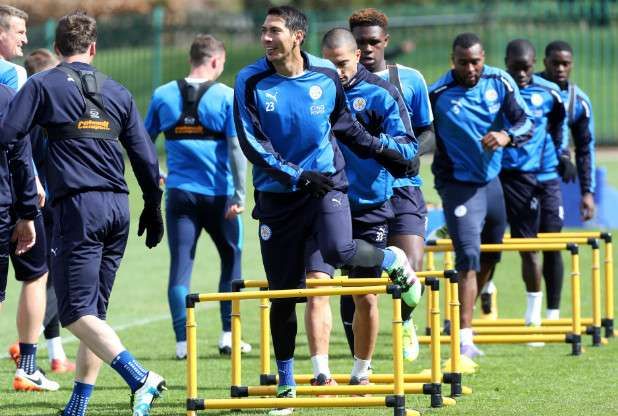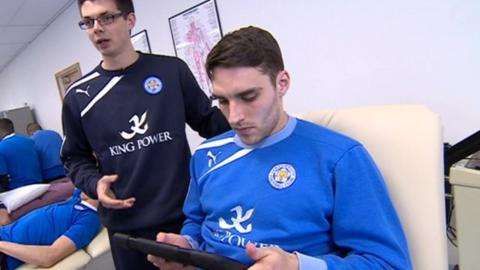
Secret to Leicester's success - Sports science
Everyone loves a fairytale and Leicester City experienced one when they remarkably escaped relegation in 2014-15, and became the champions of England the very next season. Leicester’s Thai owners appointed Claudio Ranieri as their manager, after the sacking of Nigel Pearson, who’s work is overlooked as he set up this dream scenario.
Ranieri had previously guided Chelsea to a 2nd place finish in the EPL, but he was out of favor when appointed as the Foxes manager. What happened next, we all know. The most remarkable story in the history of English football was written when Leicester lifted the trophy in front of their home fans at King Power Stadium. The story is as beautiful as it is absurd.
We saw how Vardy, Kante, along with the rest of the team, played as one team to beat the great clubs who’ve dominated the Premier League for many years. However, there’s a secret to Leicester’s sporting miracle.
Leicester City suffered the least number of injuries of all Premier League teams last season, at 20. Ever since the Nigel Pearson era, the club has been developing an innovative sports science department with the autonomy to really affect on-field incidents. The man behind all this is Matt Reeves, Leicester’s head of fitness and conditioning.
Along with Paul Balsom, who’s in charge of sports science procedure, Reeves makes sure that the players are at their peak, physically and help the players’ overall performance.
When Pearson became Leicester’s manager in 2008, he decided to set up a sports science department at Leicester, which would help a player’s overall development by collecting data on them. After the process worked well initially, and the Foxes’ owners ambition grew, they decided to invest more in this area.
This is what Reeves had to say about the process, “Although our department has grown over time, it hasn’t just happened for the sake of it. It’s because we’ve seen an area that we need to develop or we’ve seen an aspect that we could improve on, so we’ve looked to bring someone in who fits that need.”
The Foxes’ take advantage of GPS monitoring equipment to assess players’ peak speeds. They build up hamstring strength using customised leg press, and NordBord, which allows them to improve and measure hamstring strength. Most importantly, Leicester’s sports science and medical teams appreciated the fact that every player is different, so they have custom-made programmes that aid the needs of a squad with varying abilities and strengths.
Reeves revealed: “Some of our players, for example, our centre-halves, are thirty-five years old plus and weigh a 100kg, so they’re by no means being treated in the same way as Jamie Vardy, who has lit up the Premier League this season”.
Other EPL clubs have access to all these technologies, too, but using beetroot shots as a performance enhancer and ice chambers to improve recovery marks them out from the crowd.
“Leicester City is using technology to inform our practice. Not only do we use it as a descriptor of what’s happened in training, we also then look to use it as a platform for discussion, giving objectivity to what we’ve done. That allows us to plan for the future: plan the following day's training session, plan for the game and assess where each individual player is at, and are they able to perform to their maximum?”
Fewest injuries of all teams in the EPL last year
The result? Leicester recorded the fewest injuries and used the least number of players last season - perfect for a team with a small squad and a low budget. According to physioroom.com, Leicester lost just 275 days to injury last season, and they missed a player for more than two weeks of action only 8 times.
Schmeichel, Morgan, Kante & Vardy have missed 1 game between them. Second to them is Arsenal, who lost 1137 days due to injury, and players missed more than two weeks to injuries 24 times.
What turned out to be most decisive was Ranieri’s willingness to implement the plans of the science sports department in the training ground, and eventual matches. As former Liverpool fitness coach, Darren Burgess said "Quite often, the coaches don't listen", but the club’s owners made it clear that the plans of the sports science department had to be implemented in training sessions and matchdays.
If the sports science department suggested that a key player like Mahrez or Vardy had to be rested for a training session, Ranieri would be on board with it. The physical conditioning of the team was very important to a team who relied on pace, as they went on to have more counter-attacks and scored more counter-attacking goals than any other team this season, according to Opta.
The players were trained to perform regular sprints without their bodies breaking down, and the prime example of it was Jamie Vardy - who recorded a speed of 35.44 km/h to become EPL’s fastest last season.


